Contact Angle Effect on Friction in Hydrophobic Surfaces, ANSYS Fluent CFD Simulation Tutorial
$120.00 $60.00 Student Discount
- In this project, the Contact Angle Effect on the Friction Factor in Hydrophobic Surfaces is studied in ANSYS Fluent software.
- We have designed the geometry using ANSYS Design modeler software.
- Also, we created the mesh on this geometry using ANSYS meshing software. The mesh type is structured with 250,047 cells.
- To simulate the multiphase treatment of the solution, the VOF model is chosen.
To Order Your Project or benefit from a CFD consultation, contact our experts via email (info@mr-cfd.com), online support tab, or WhatsApp at +44 7443 197273.
There are some Free Products to check our service quality.
If you want the training video in another language instead of English, ask it via info@mr-cfd.com after you buy the product.
Description
Description
In this project Contact Angle Effect on Friction Factor in Hydrophobic Surfaces is studied in ANSYS Fluent software .
The Contact Angle is a quantitative measurement of the wetting of a solid by a liquid. Every solid, liquid, and vapor system form a unique contact angle.
Hydrophobic and Hydrophilic surfaces repel and attract water and make more and less than 90 degree, respectively.
The geometry of the present model is three-dimensional and we model it using Design Modeler software. We do the meshing of the present model by ANSYS Meshing software. The mesh type is structured. Also, the element number is 250,047.
For a closer look, droplets with 125, 150 and 175 degree contact angles are modeled and their shear stress with the wall in different diagrams are compared.
Methodology: Contact Angle Effect on Friction
To simulate the multiphase treatment of the solution, VOF model is chosen. Also, the viscous model is assumed to be Laminar and the solver is transient.
Conclusion
At the end of the solution process, animations and two-dimensional contours of the volume friction of the domain are presented.
At first, a water droplet standing at the height of 20mm is patched into the domain, and its treatment is investigated under different contact angles. The literature says that the shear stress and friction factor will decrease by increasing the contact angle between water and surface.
As can be seen in the plots, the maximum amount of models is decreasing while the contact angle increases.
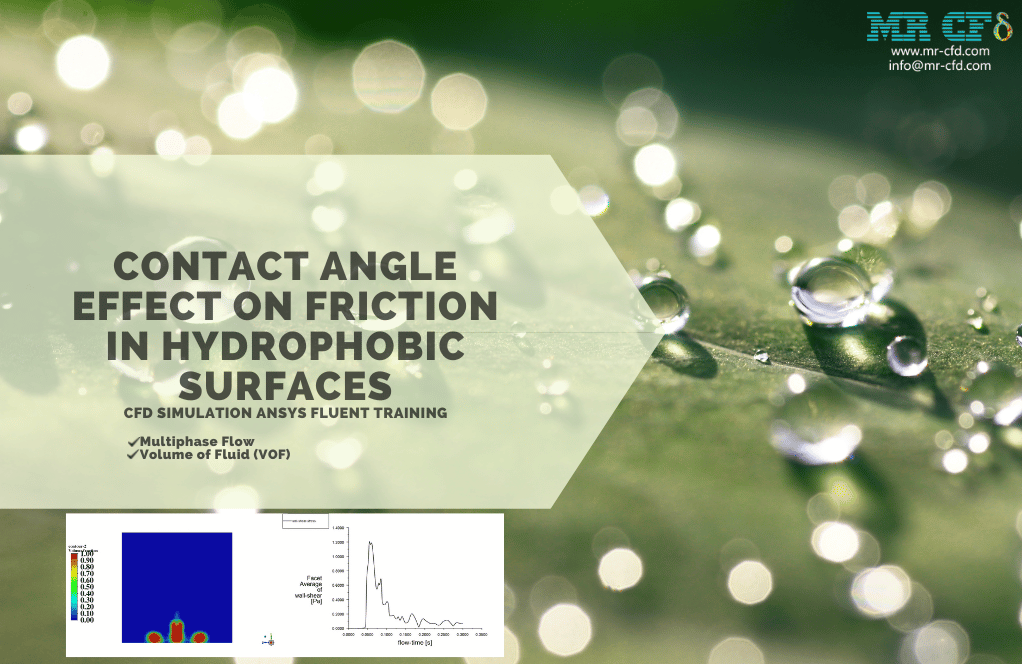
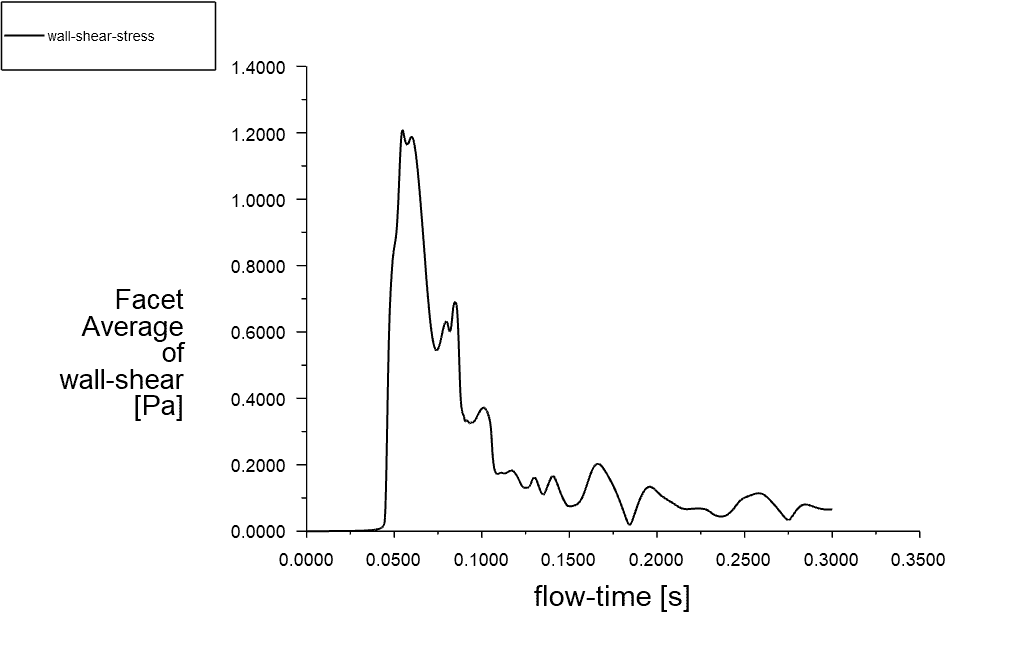
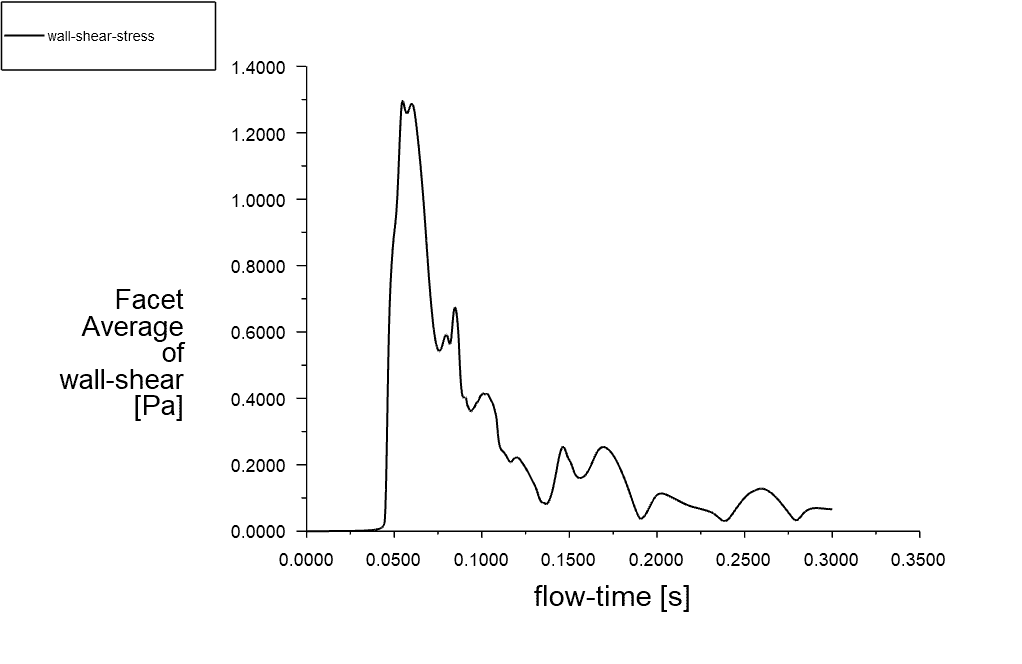
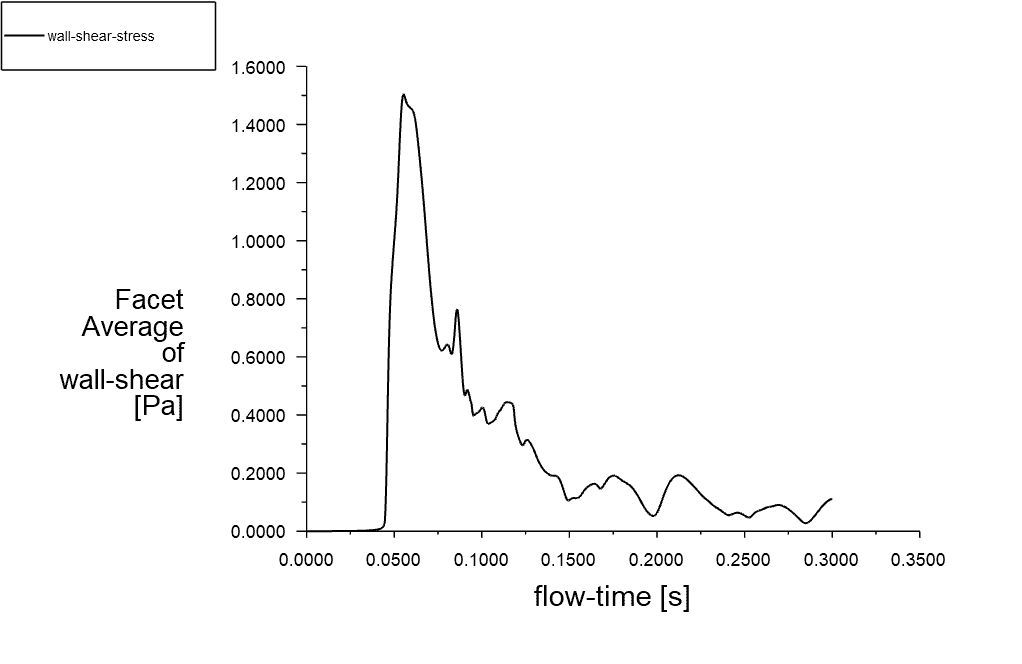
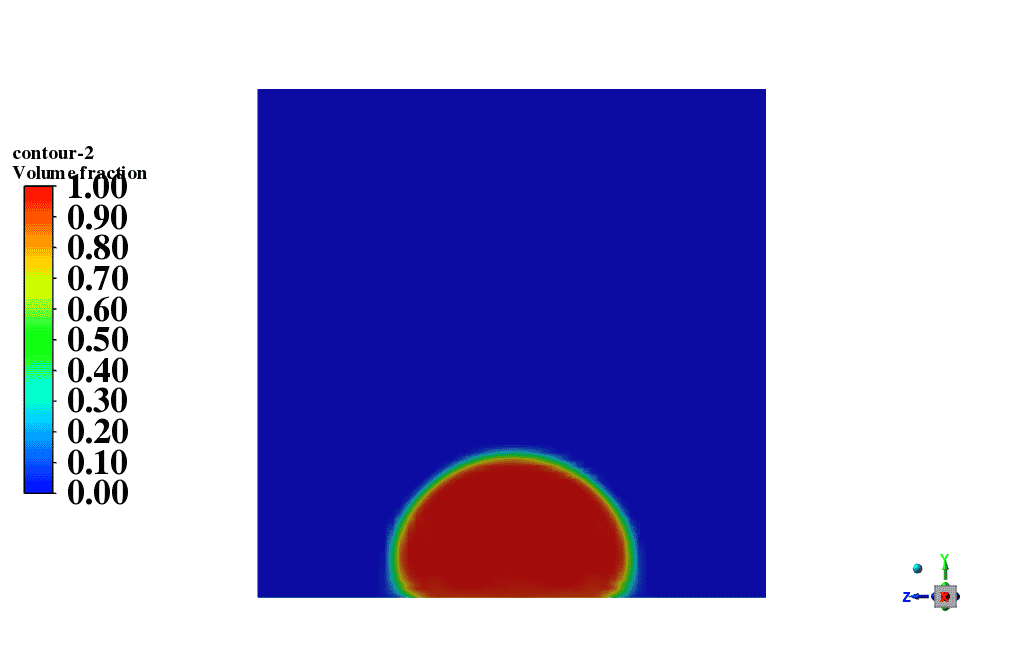
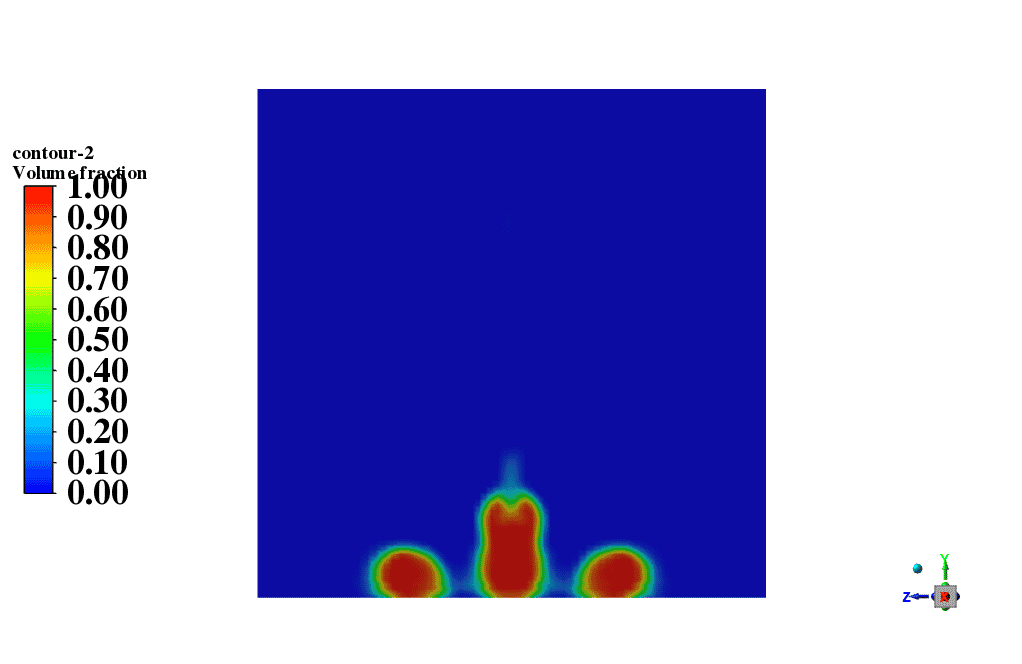
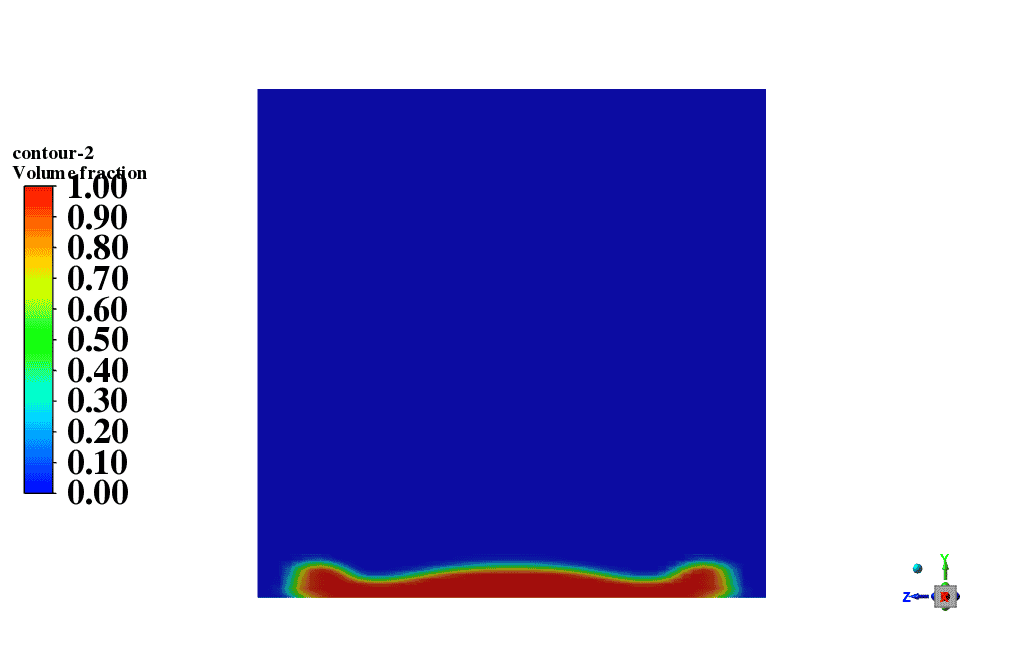
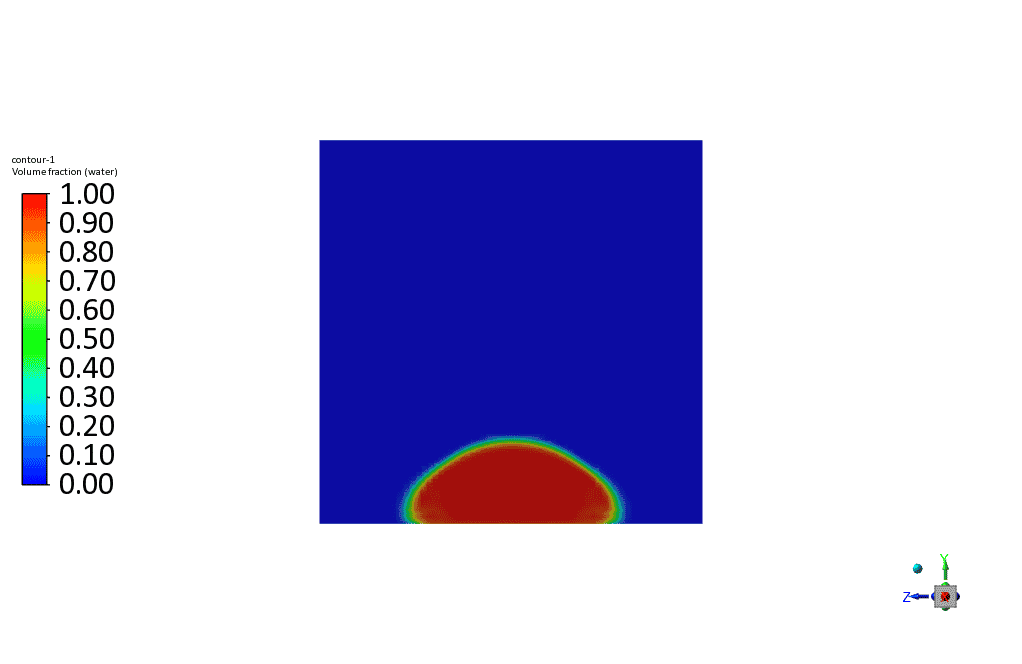
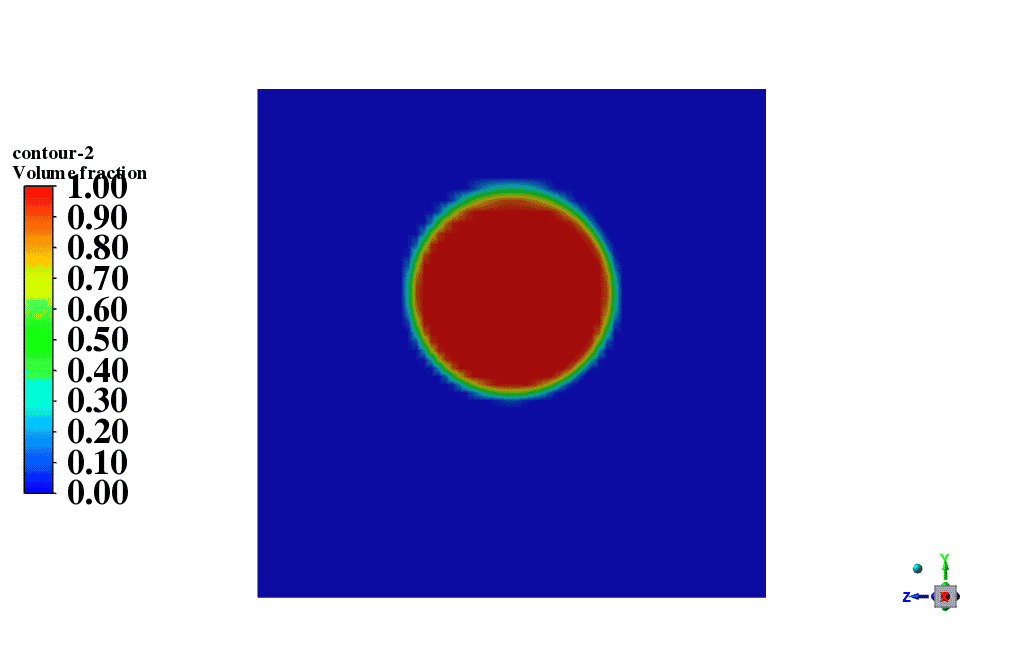
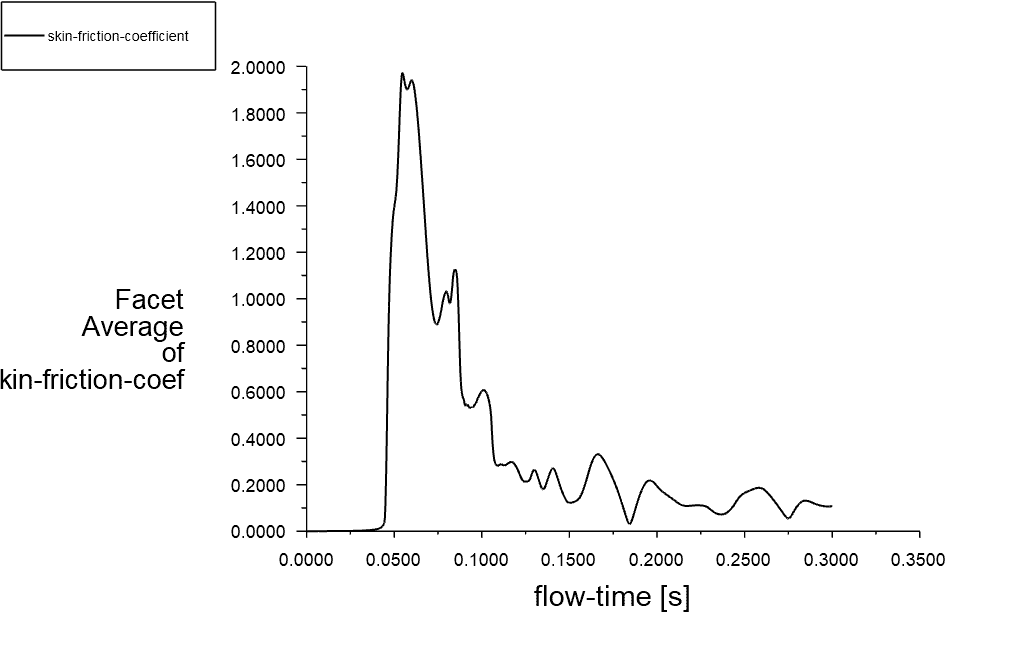
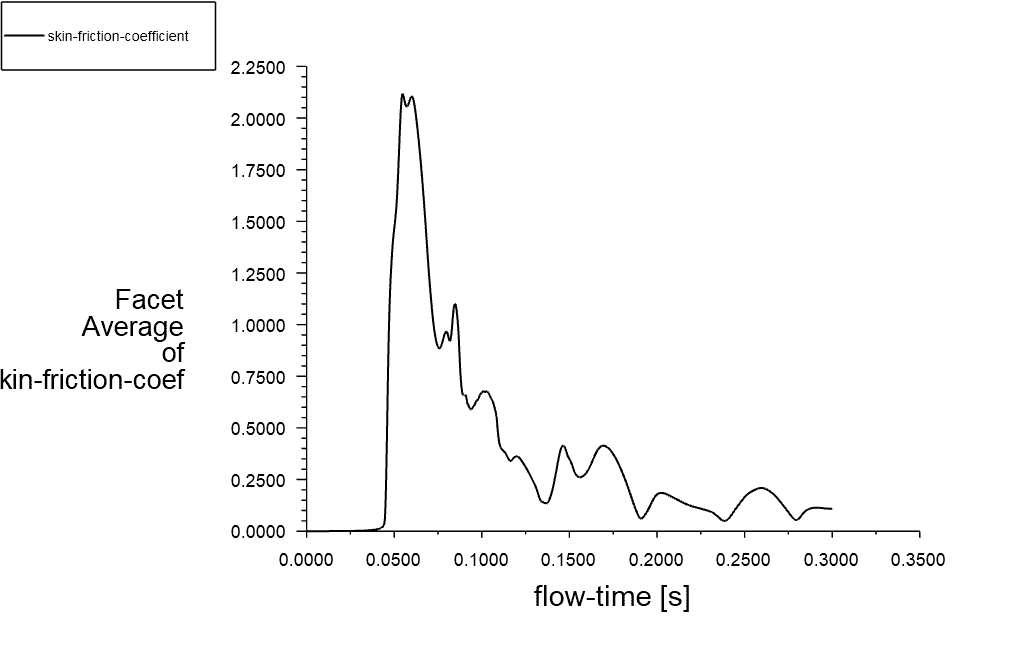
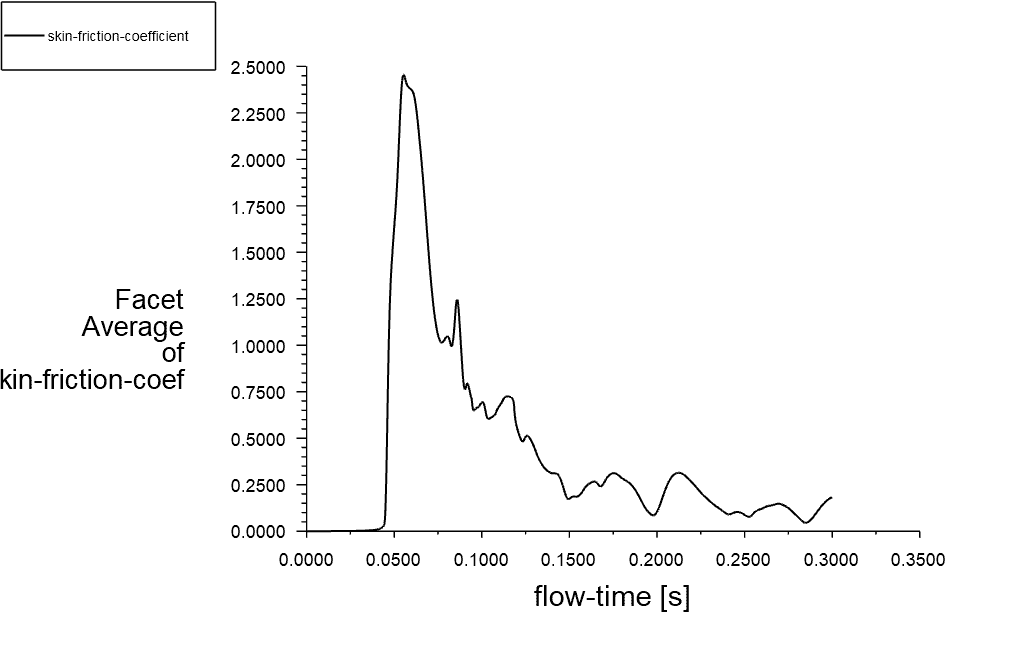

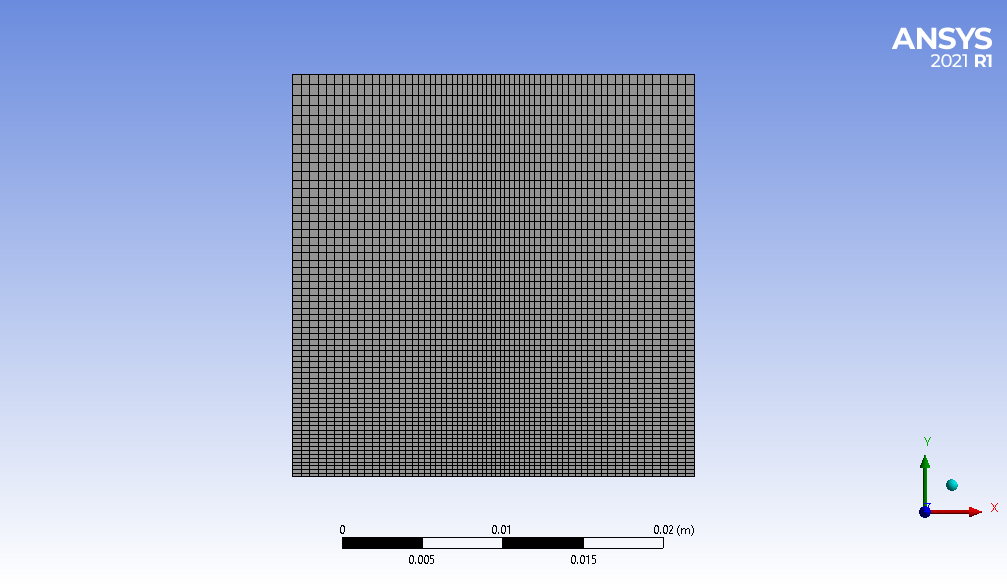
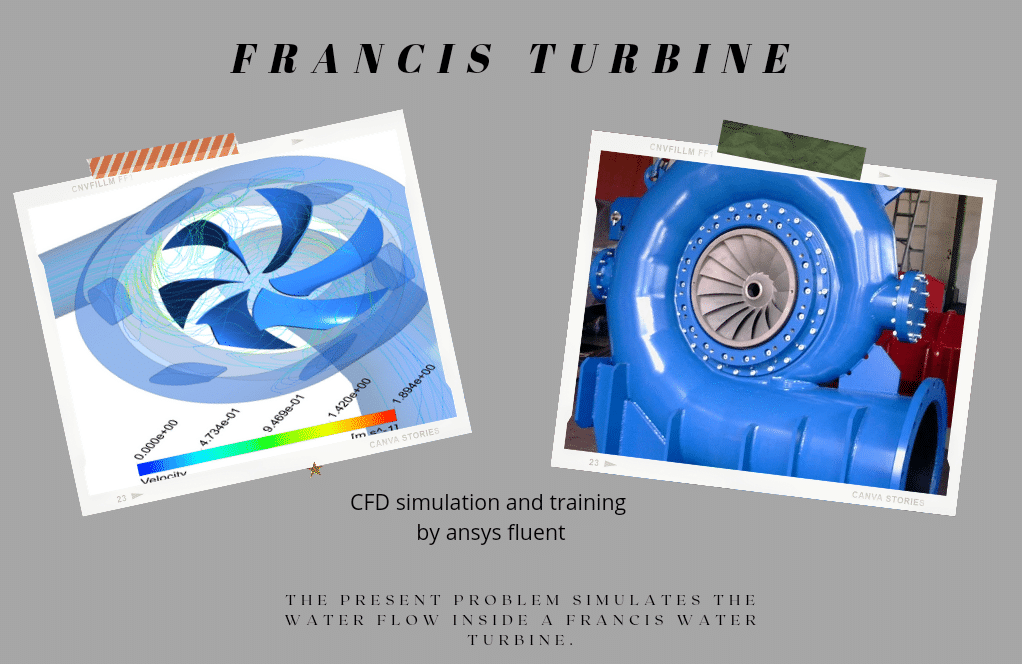



Leonardo Kerluke –
This tutorial was exceptionally clear in explaining the relationship between contact angle and friction on hydrophobic surfaces. The visual content and the plots were particularly helpful in understanding the concept further.
MR CFD Support –
Thank you for your positive feedback! We’re thrilled to hear that our tutorial on the impact of contact angle on hydrophobic surface friction in ANSYS Fluent was helpful and the visual aids made the concept clearer for you.
Monroe Connelly IV –
I was fascinated by the Contact Angle effect demonstrated in the tutorial. Seeing real-time changes in shear stress was enlightening. The practical implications for designing hydrophobic surfaces are endless!
MR CFD Support –
Thank you for your kind feedback! We’re thrilled to hear that our tutorial on the Contact Angle Effect on Friction in Hydrophobic Surfaces was enlightening and provided valuable insights for your design considerations. It’s wonderful to know that the information was presented effectively. If you have any more questions or need further clarification, feel free to reach out.
Bud Weissnat Sr. –
Splendid work! The investigation into contact angles and friction on hydrophobic surfaces provided great insights. The visual content helped in understanding the effects lucidly. Looking forward to more such informative CFD simulations.
MR CFD Support –
Thank you for your positive feedback! We are delighted to hear that our tutorial on the Contact Angle Effect on Friction in Hydrophobic Surfaces was informative and helpful. Stay tuned for more comprehensive CFD simulation tutorials!
Stephany Auer –
This tutorial is phenomenal! It practically illustrates the effect of contact angle on friction, making the principles of hydrophobic surface interactions much more tangible.
MR CFD Support –
Thank you for your kind words! We’re thrilled to hear that you found the tutorial on contact angle and friction factors helpful and educational. It’s great when our customers can deepen their understanding through our products. If you have any more feedback or need further assistance, feel free to reach out!
Kaycee Hegmann PhD –
Such an interesting study! I’m impressed with how the change in contact angle affects the shear stress on the hydrophobic surfaces.
MR CFD Support –
We appreciate your positive feedback on our study of the Contact Angle Effect on Friction in Hydrophobic Surfaces using ANSYS Fluent. We are glad to hear that you found the investigation informative and helpful. Thank you for taking the time to complement our work!
Jedediah Oberbrunner –
This learning resource on the effect of contact angle on friction in hydrophobic surfaces seems very detailed and comprehensive. Appreciating the clear explanation of methodology and extensive analysis!
MR CFD Support –
Thank you for your kind words! We’re glad to know our thorough methodology and analysis on the effect of contact angle on hydrophobic surfaces proved insightful for you. If you have any further questions or need assistance with other CFD topics, don’t hesitate to reach out to us.
Prof. Madelyn Gaylord –
Wonderful tutorial! I really appreciated how the simulation showcased the relationship between contact angle and friction factor. The use of different contact angles and the clear comparison of results made the concepts very accessible.
MR CFD Support –
Thank you for your positive review! We’re glad to hear that the tutorial on Contact Angle Effect on Friction was informative and helpful. It’s rewarding for us to know that our approach to teaching these concepts is effective. If you have any further questions or need additional support, feel free to reach out. We’re here to help!
Juanita O’Conner –
I’ve always been curious about hydrophobic surfaces and the simulations look fascinating. Is it also possible to measure the difference in drag force on surfaces with varying contact angles using this simulation?
MR CFD Support –
Absolutely! The simulation allows for comparison of shear stress profiles for different contact angles, which directly relates to how smooth or repellent the surface is to water. . By analyzing the shear stress data, one can infer the drag forces experienced by the surfaces with differing hydrophobic properties.
Lavina Homenick –
The contact angles used in this simulation (125, 150 and 175 degrees) are much higher than the common 90 degrees threshold for hydrophobic surfaces. How does this increased contact angle affect the analysis you are presenting in this tutorial?
MR CFD Support –
With the increased contact angle of 125, 150, and 175 degrees, the simulation shows a more pronounced hydrophobic character of the surface, resulting in lower friction and shear stress as the contact angle increases. The tutorial presents how this enhanced hydrophobicity influences the fluid dynamics by displaying droplet behavior and the movement changes in contexts of friction and shear forces in comparison with more standard contact angles.
Prof. Kaden Herzog III –
This tutorial was a game-changer for my thesis! The relationship between contact angle and friction on hydrophobic surfaces was demonstrated perfectly. Seeing the impact of various contact angles visually through those detailed diagrams made my research so much more concrete. Brilliant!
MR CFD Support –
We’re thrilled to hear our tutorial has contributed significantly to your thesis! It’s great to know that the visuals and detailed diagrams have provided tangible evidence for the relationship between contact angle and friction on hydrophobic surfaces. Thank you for your kind words, and we wish you the best with your research projects!
Dr. Travis Langosh Sr. –
I found the explanation of how droplet behavior changes with contact angles to be particularly insightful. The visualizations must have been very helpful in understanding this effect.
MR CFD Support –
We are so glad to hear you found the simulation insightful and the visualizations helpful! Understanding the relationship between contact angles and droplet behavior is crucial in many applications, and we strive to make our tutorials as clear and educational as possible. Thank you for your positive feedback!
Toni Schiller –
This tutorial provides excellent insights on how the contact angle affects shear stress on hydrophobic surfaces. I’m amazed by the clarity of the simulation results and plots. It surely helps to understand the relationship between contact angles and friction factor changes.
MR CFD Support –
We’re thrilled to hear that you found our tutorial on the Contact Angle Effect on Friction in Hydrophobic Surfaces informative and helpful. Thank you for recognizing the effort put into ensuring the simulation results and plots are clear. Your feedback is greatly appreciated!
Ethan Feest –
I am truly impressed with the thorough approach towards understanding the relationship between contact angle and friction on hydrophobic surfaces. The visual aids were particularly helpful in making the technical concepts accessible. Hats off to the team for an educational resource that combines practicality with academic rigor.
MR CFD Support –
Thank you for your positive feedback! We are delighted to hear that our tutorial on the Contact Angle Effect on Friction in Hydrophobic Surfaces was insightful and that the visual elements enhanced your learning experience. Your acknowledgment means a lot and encourages us to continue developing comprehensive educational content. If you have any further questions or need assistance, feel free to reach out.
Mattie Lindgren –
I watched the tutorial and saw the droplets changing with different contact angles. However, can you explain how I can measure the contact angle of a surface in my lab?
MR CFD Support –
The contact angle of a surface in your lab can be measured using a method called sessile drop technique. It involves placing a small droplet of liquid on the surface and then using a camera to take a side-view photograph. After taking the photograph, you can analyze the image using software that’s capable of measuring the angle where the liquid and air interface meets the solid surface. There are also specialized instruments known as goniometers designed for this purpose which provide more precise measurements of the contact angle.
Colt Goldner –
This tutorial was insightful. The visual aids – animations and contours – helped clarify the effect of contact angles on friction. Thank you!
MR CFD Support –
We’re thrilled to know the tutorial met your expectations and that the visual components were helpful in understanding the concepts. Thank you for taking the time to leave a positive review!
Prof. Zora Stracke –
I appreciate how the simulation captures the relationship between contact angles and friction on hydrophobic surfaces. It’s fascinating to see the impact of wettability translated into computational results, especially the decrease in shear stress with increased contact angle that aligns with theoretical expectations.
MR CFD Support –
Thanks for your positive feedback! It’s gratifying to know that our product successfully illustrated the complex interplay between contact angles and surface friction in a way that matched your expectations and aligned with scientific literature. Your understanding and appreciation of the simulation’s outcomes mean a great deal to us.
Emily Rosenbaum –
The explanations and results presented in this tutorial were fantastic! I observed the mentioned trend in friction factor reduction with the increasing contact angle. It has greatly enhanced my understanding of the interaction between hydrophobic surfaces and fluids.
MR CFD Support –
We’re thrilled to hear that you found the tutorial on the Contact Angle Effect on Friction in Hydrophobic Surfaces informative and helpful! If there’s anything more you’d like to explore or learn, feel free to reach out. Thanks for taking the time to leave a positive review!
Mr. Jeffery Mitchell Jr. –
I was impressed by how the varying contact angles influenced the friction factor. The detailed comparison between different angles provided valuable insights.
MR CFD Support –
Thank you for your positive review! We’re glad you found the insights on the contact angle’s influence on friction factors illuminating. If there’s anything else you’d like to explore or learn about, please feel free to reach out. We’re here to help!